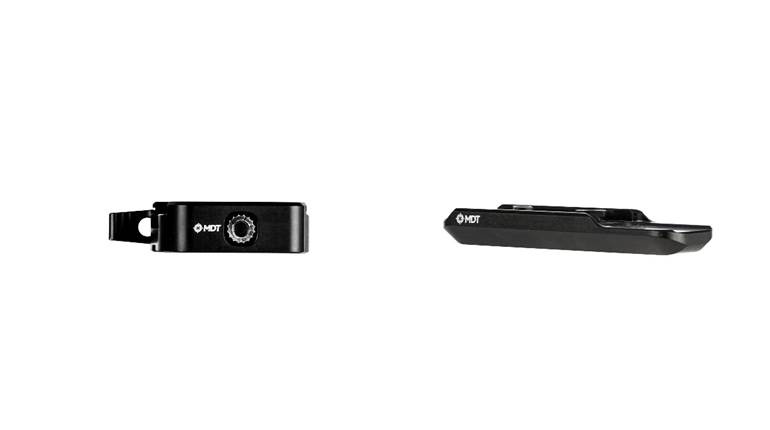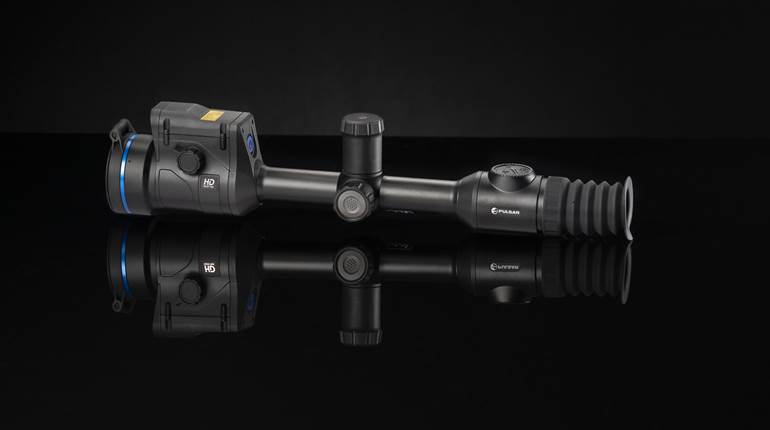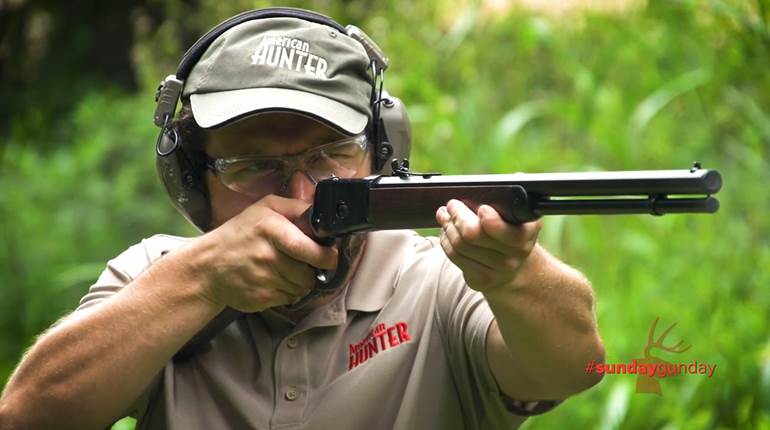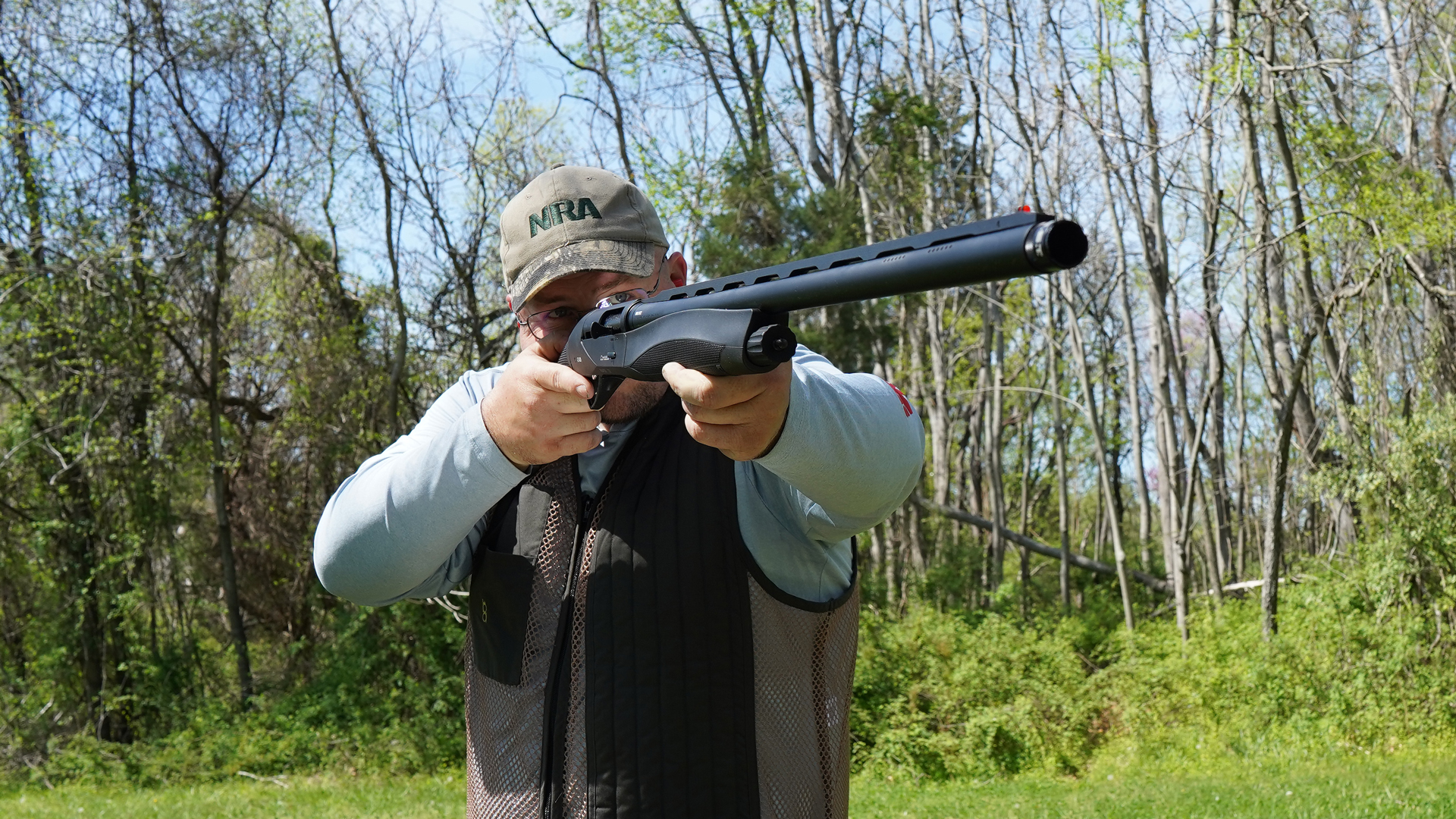
Turn that dial to 2013 and rev it up to 88 m.p.h., we’re going back to when Benelli announced its new shotgun line called the ETHOS. My job at NRA at the time was divisional armorer, and Benelli came to NRA HQ to show the editors what it had been working with near the time of product launch. At the time, I had yet to earn my position on American Rifleman, so my job was to make sure these events went smoothly, and it wasn’t my job to critique products. But that new shotgun I sampled during that event left a lasting impression, and I couldn’t wait to eventually circle back to it for more intimate testing. And, I’ve got to say: like a fine Italian wine, the ETHOS has gotten better since then.
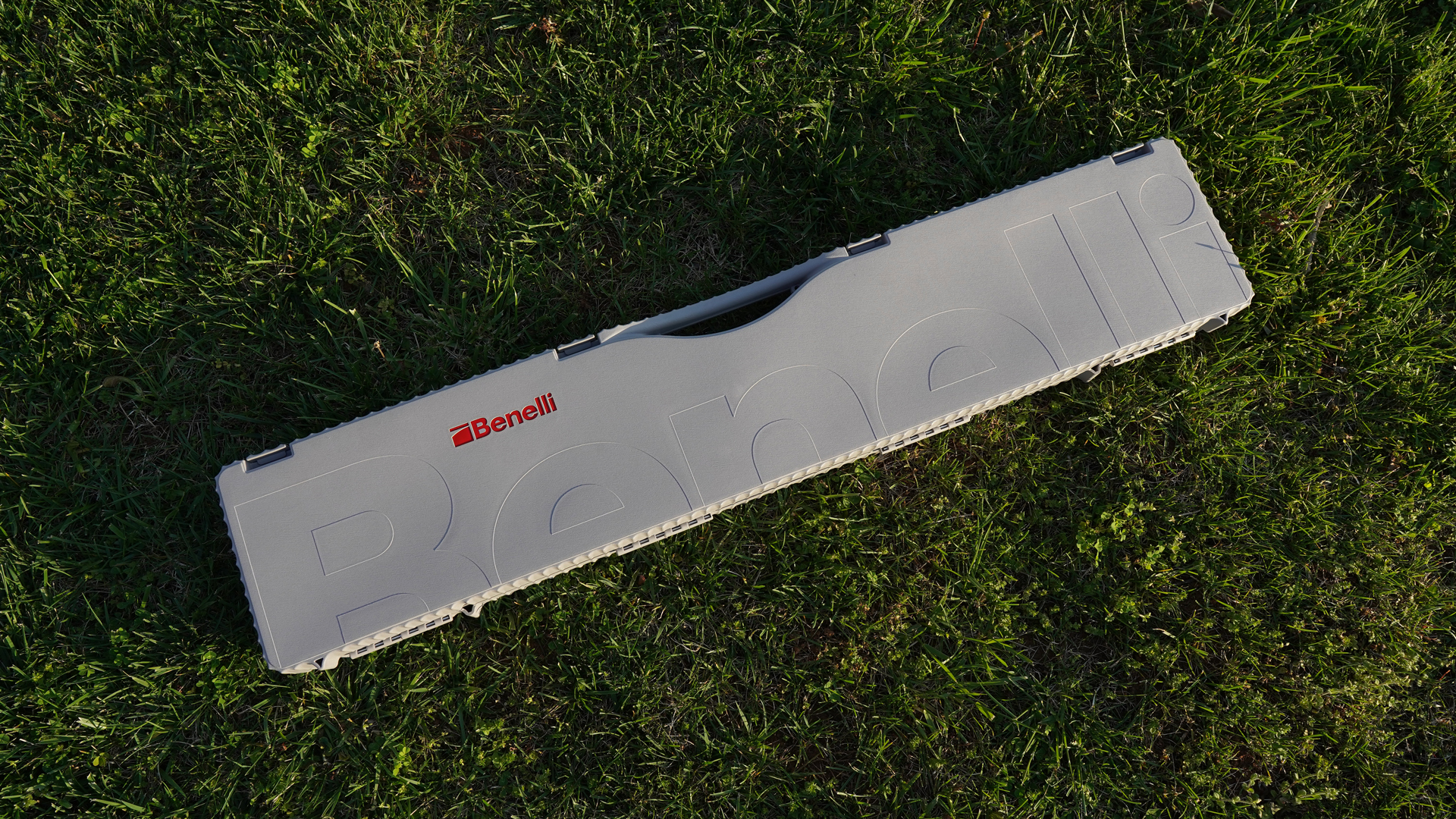
Love At First … "Pull!"
And that was all it took. Upon watching that first clay target take flight from the automated thrower, jumping through pockets of air like a dove strafing a field of corn for its morning snack; the gun met my position, swung gracefully and connected what appeared to be 400+ BBs into that once brightly colored target. Like a cloud of feathers drifting across the tasseled corn tops, the target’s dust cloud swept through the course as another target appeared on report. The Benelli ETHOS Cordoba BE.S.T. danced from left to right as the report target emerged from grass.
I sent the gun into motion even faster, attacking the fresh target as quick as possible, then another successful strike. It was seemingly effortless. And it was at that moment I understood what I had in hand was a force to be reckoned with. The ETHOS BE.S.T. Cordoba is one of the most nimble, lightweight and smooth-shooting 12-ga. shotguns I’ve handled to date, and it seems as though you can’t hurt it either.
Now, I’m not going to “drag it across a parking lot” to try and scratch its finish or bury it at the bottom of a pond to see how long it stays rust-free. All those tests have been done by other writers and Benelli staffers, and the Ethos Cordoba BE.S.T. prevails. For this review, I want to delve into the gun and its features that I believe are important to understand. So let’s dive in.
 The Ethos AA-grade 12-ga. fitted with a 26” Crio System barrel and the Progressive Comfort recoil-reduction system, exemplifies Benelli’s Italian craftsmanship and thought-forward engineering. Image courtesy of BenelliUSA.com.
The Ethos AA-grade 12-ga. fitted with a 26” Crio System barrel and the Progressive Comfort recoil-reduction system, exemplifies Benelli’s Italian craftsmanship and thought-forward engineering. Image courtesy of BenelliUSA.com.
Benelli set a benchmark with the development of the Inertia Driven (ID) System in 1967. It simply proved versatility could be had through less-complicated means. Across the board, ID proved to be a win-win for consumers and manufacturers. There are fewer parts to manufacture, which means fewer parts to break and less maintenance. The system is extremely secure, too, because the rotating bolt locks into the barrel, as such, the receiver can be made of lighter and softer materials.
Tuning the action becomes less difficult, though, that work is completed before exiting the factory, leaving nothing for the consumer to have to figure out, sans making slight stock adjustments and picking one of five included chokes to use on flushing game. It’s important to note, too, that ID is born inherently versatile. By this, I mean that there are no gas rings to flip, springs to swap or special spirit-worship ceremonies to perform before changing load types—simply grab the ETHOS and go shooting with whatever! So, I did!

Image courtesy of BenelliUSA.com.
The Cordoba BE.S.T.
Of all the ETHOS models available, this one is the one I want with me when dove-hunting in Argentina, stalking Osceola turkey through Florida’s marshes and laying out for eider in the frosty coastline waters of New England, because it is made for more than just a clays course. The Cordoba model screams for adventure, and so far, the model I have has only taken a local coyote, but I know with a spring gobbler season currently open, there’s more in store.
I particularly love the gun’s ... well, everything. But what I really like is the matte-finished appearance and robust treatments on the metal parts, because this is a scattergun I want to do everything with. A few years ago, Benelli hacked the folds of time, figured out some really amazing technology and came back with a treatment that is, in my opinion, the single-best surface treatment for gunmetal I’ve ever experienced. I plan to treat this gun gently. It is expensive, and I don’t want to hurt it. I also can’t tell you how many times I’ve felt similarly about other guns, taken great care of them and still had to spend time at the bench detailing with bronze wool. Not with BE.S.T. So far, it has shrugged everything I’ve tossed at it.
 Benelli saltwater submersion testing revealed unbelievable results with zero corrosion or rust during the three-month sample period. Note the below barrel following a 48-hour period. Image courtesy of Benelli USA.
Benelli saltwater submersion testing revealed unbelievable results with zero corrosion or rust during the three-month sample period. Note the below barrel following a 48-hour period. Image courtesy of Benelli USA.
So, what is BE.S.T.? The acronym reflects Benelli Surface Treatment. Being that BE.S.T. is a treatment—this is something I can’t stress enough here—it is not a finish or a painted-on colorized layer to add films of protection. This treatment is a chemical application process that alters the material state of the steel’s surface. Benelli Surface Treatment is proprietary, with more than a decade in development, and I’m just going to call it "Voodoo magic sauce" that gives the already-awesome Crio-treated barrels unmatched characteristics. If there’s a choice, this is the treatment to have on a firearm.
Before you go looking, I’ll save you the search by noting that, at the time of this writing, Benelli is only offering BE.S.T. on select shotguns and Lupo rifles. BE.S.T.-treated parts on the ETHOS Cordoba include barrel, barrel extension, bolt, bolt handle, extended choke, safety, stud, trigger and trigger pin. Benelli backs its claims with confidence, too; a 25-year warranty covers BE.S.T. like a nice little cherry on top.

The Best Parts
On the range and in the field, the ETHOS has taken on anything I’ve put in front of it with flawless performance. And with about 800 rounds through the gun, I’m at a point of confidence with it and don’t want to let go for any of my other scatterguns. The fit and finish Benelli provides with its ETHOS receives no complaints, too. In fact, this is an area the brand excels in. It must be that Italian heritage wherein, like a pair of great leather shoes, the ETHOS "fits" so well.
Purists may say the stock is “edgy” or “too contemporary,” but I say it fits and that the ETHOS ain’t no canoe paddle with a pipe attached either! Its lines are graceful, swept with strokes of modern elegance that blend with advanced engineering and technologies to solve problems shooters could encounter. For instance, the shell-view feature along the bottom, central edge of the fore-end is designed to indicate how many rounds are in the gun. Of course, it’s vital to physically check guns for ammunition and keep count as your shooting unfolds, but in the hunting fields where capacity limit is open, this feature is a handy one, especially when the snow geese are dropping like hail in front of a springtime tornado.
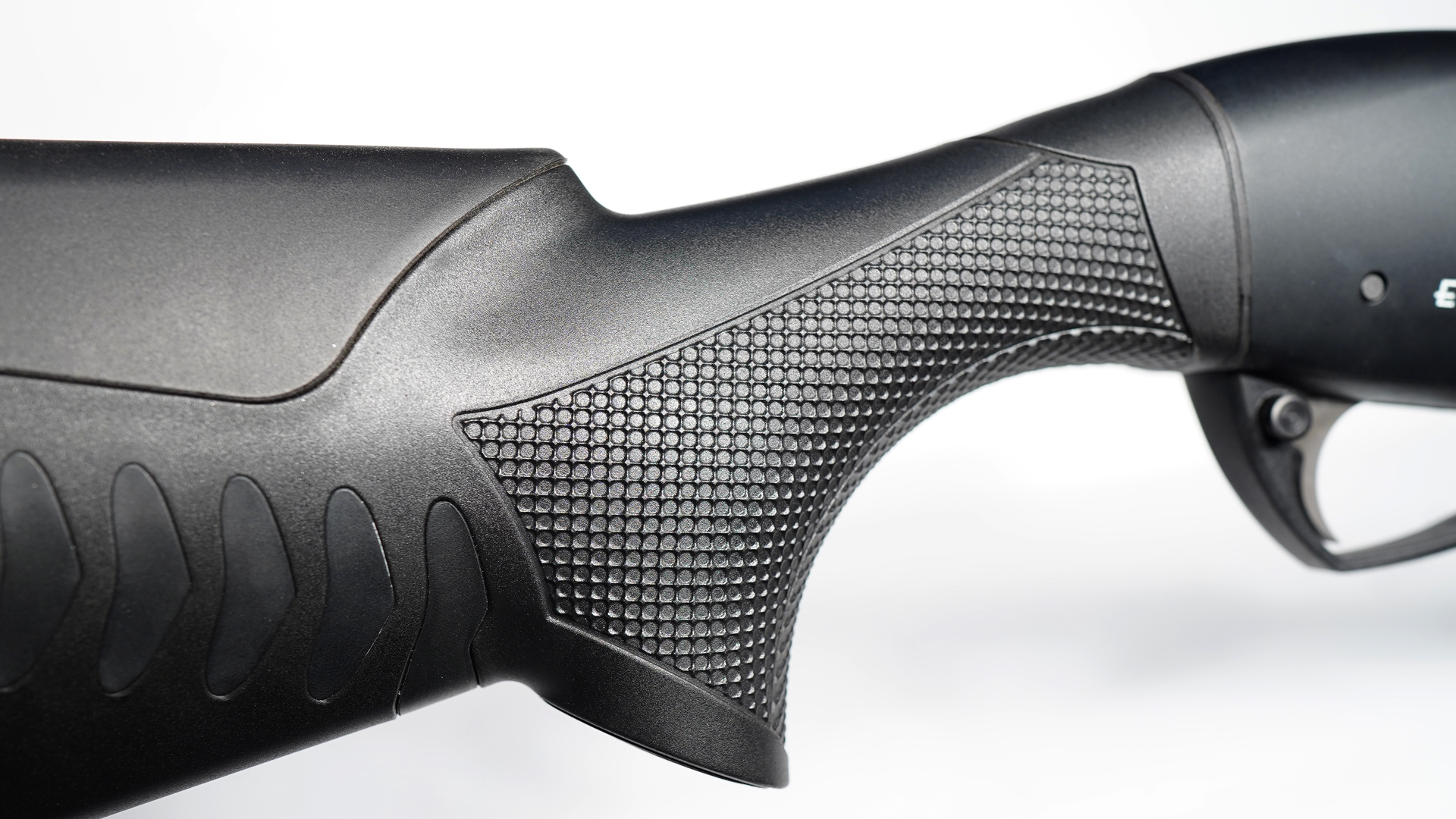 Benelli’s ComforTech stock system employed on the ETHOS Cordoba features 22 recoil-reducing chevrons, ComforTech Gel at the butt and comb and features molded-in texturing panels along the wrist of the pistol-grip stock.
Benelli’s ComforTech stock system employed on the ETHOS Cordoba features 22 recoil-reducing chevrons, ComforTech Gel at the butt and comb and features molded-in texturing panels along the wrist of the pistol-grip stock.
Within nearly every inch of the ETHOS Cordoba, you’ll find purpose-built features. Designs such as ComforTech 3, one of Benelli’s latest recoil-reduction systems, which I’m sure took hours upon hours of R&D to come to fruition, but it really is a simple system in that there are no mechanisms to consider, merely smart engineering combined with state-of-the-art synthetics to minimize weight while combating the effects of felt recoil.
To achieve this, the ComforTech buttstock exterior flexes, but not in a way that is noticeable, aside from the reduced recoil, of course. And this wasn’t a case of "let’s try this or that." Benelli’s technical department relied on computer-aided engineering to analyze, precisely, the exact dimensions necessary to reduce recoil through flexion. Aside from its highly advanced outer shell, Comfort Tech is also packed with 22 synthetic, recoil-reducing chevrons, which can be seen from the side and are sort of rubbery to the touch. The parts that contact the shooter, such as the recoil pad and replaceable comb, are made of a unique material dubbed ComforTech Gel, which is soft to the touch yet resilient and designed to take the pounding from magnum-charged 3” loads instead of your face and shoulder taking the hit.
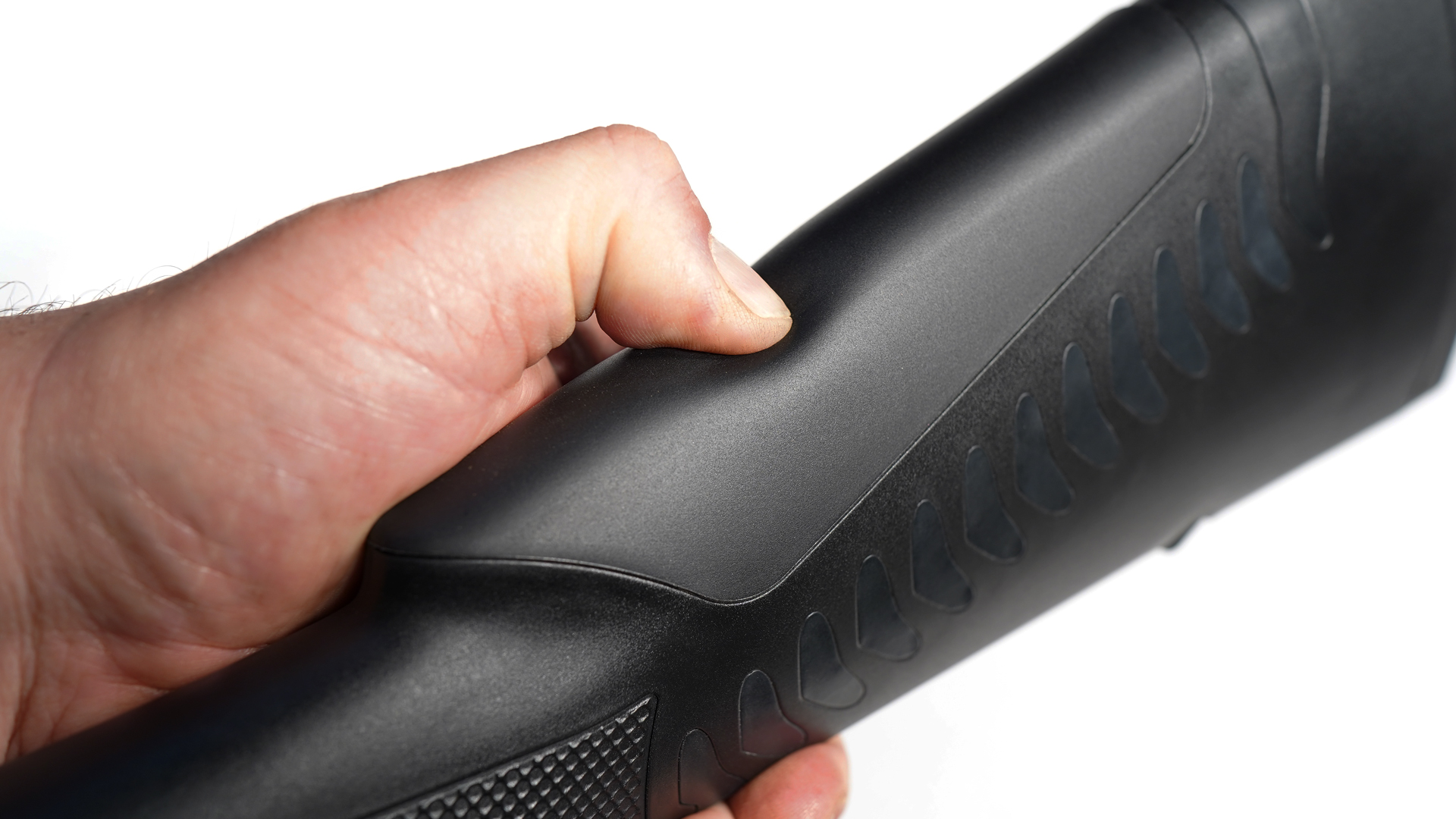 The replaceable comb, is made of a material called ComforTech Gel, which is designed to mitigate recoil against the shooter’s cheek. The material is supple yet resilient, and Benelli offers a replacement high-profile comb as an upgrade for those who may need it.
The replaceable comb, is made of a material called ComforTech Gel, which is designed to mitigate recoil against the shooter’s cheek. The material is supple yet resilient, and Benelli offers a replacement high-profile comb as an upgrade for those who may need it.
One of the most useful features I’ve found with the Cordoba is the fact that Benelli includes stock shims in addition to five extended choke tubes in a handy little storage case. The reason these shims and tubes are such a vital part to the success of a shotgun shooter is that they enable customization and tuning.
A properly fit scattergun will act as an extension of your body. With a handgun, you have a rear sight and front sight, and the trigger is squeezed carefully while maintaining a perfect sight picture on target. While rifles are similar to pistols with irons, optics on both are straightforward. But shotguns are an entirely different ball of yarn. Typically, shotguns are fired at moving targets, whether it be flushing/landing game or moving clay targets, and as such, they require a uniquely different set of skills. Shotguns are pointed while in motion, not aimed like handguns and rifles at stationary targets, and the shotgun must fit properly to a shooter to accomplish this goal successfully.
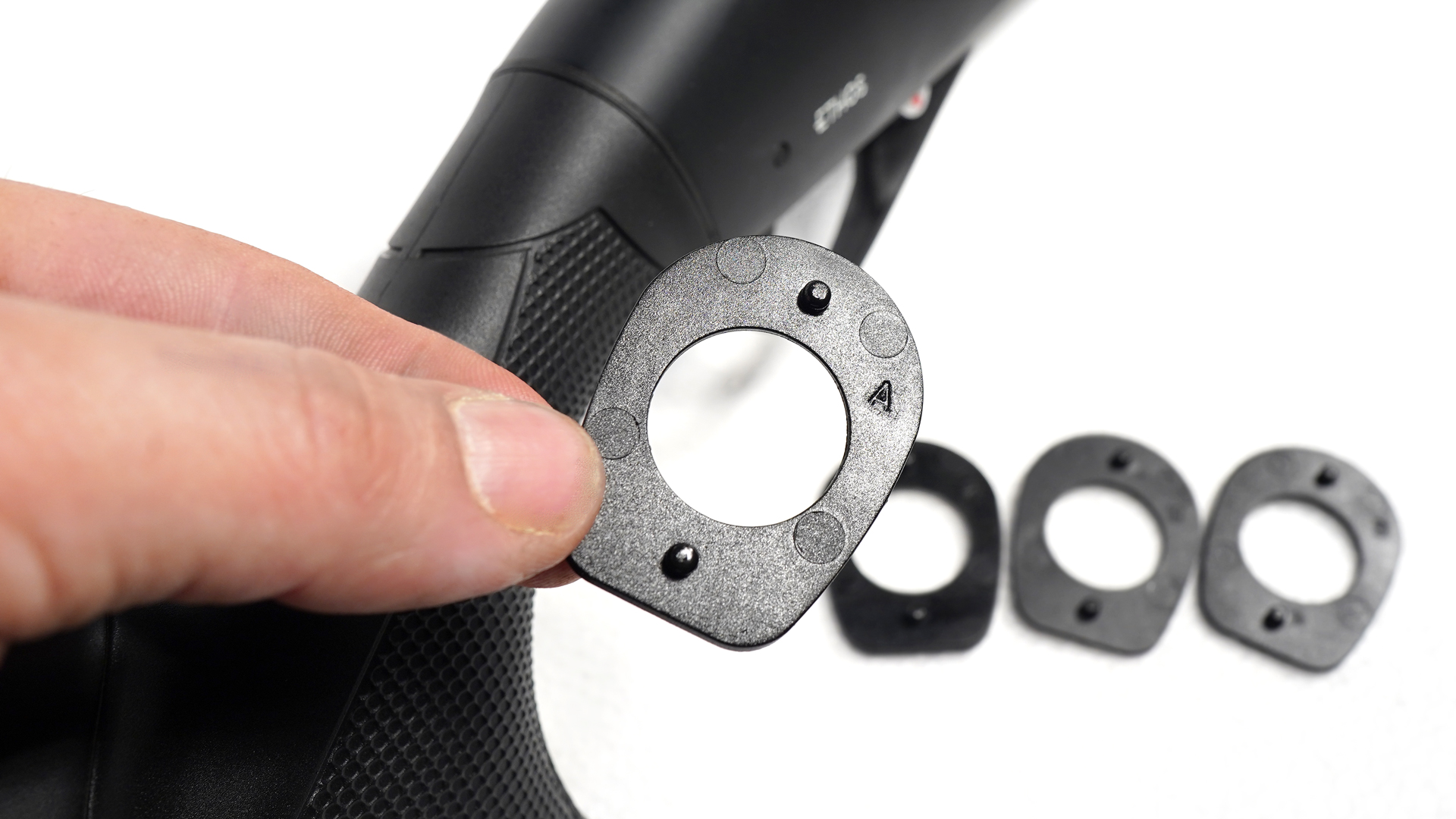 Drop shims are included with the Benelli ETHOS Cordoba to allow give the gun a custom fit, whether it shoots high or low. Shims are labeled for easy identification.
Drop shims are included with the Benelli ETHOS Cordoba to allow give the gun a custom fit, whether it shoots high or low. Shims are labeled for easy identification.
Benelli includes four drop shims, 45 mm, 50 mm, 55 mm and 65 mm, and two reversible drop plates to better help achieve that perfect fit. Swapping drop shims is quite simple, too, although it may take some time at the patterning board and workbench to dial in the best match. But I can assure you the time will be well-spent. A qualified gunsmith is the best start for a project of this nature, but if this is something of DIY interest, Benelli USA hosts several stock adjustment videos on its YouTube channel with good visuals to help understand what the process entails.

Inner Workings
Benelli’s ID system has withstood nearly 60 years and shows no signs of stopping. There have been minor refinements along the way, all of which have improved its overall makeup. And the same can be said for the ETHOS. Even though the ID patent has expired and we’re seeing many copycats in the market, none are like the Italian-made ETHOS Cordoba BE.S.T.
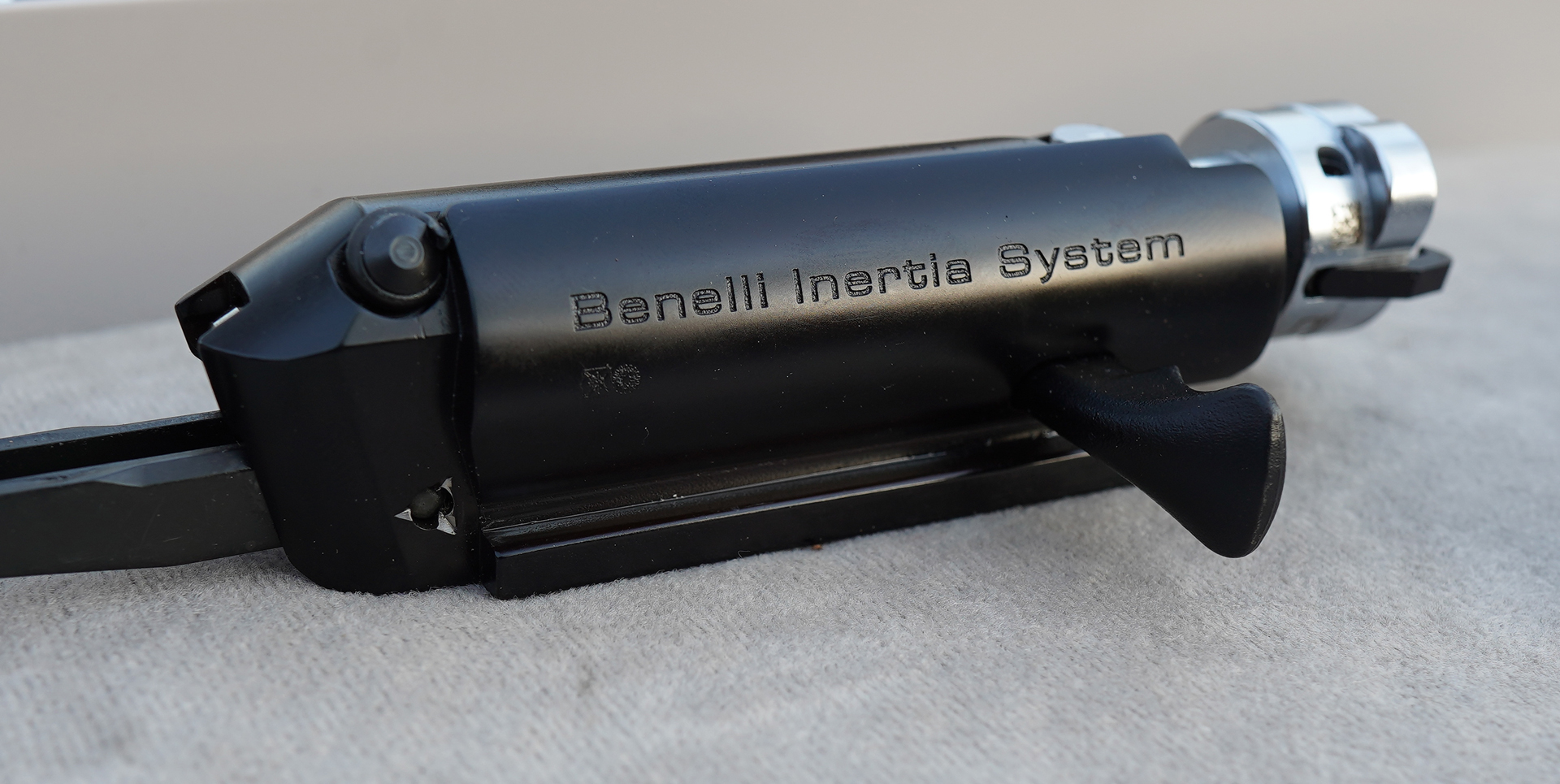
With hundreds of rounds through the gun prior to taking it down for photos and tinkering with these words, I was impressed, as usual, to see the lack of filth within the Benelli action. This is because of the ID system. Unlike gas-operated shotguns that expel their carbon fouling in every nook and cranny, the ETHOS sends it all out the muzzle and barrel ports, which is partly because the bolt locks into a barrel extension, effectively sealing out everything from the action.
A quick wipe with a microfiber towel doused in Benelli oil, and it’s ready for photos or another range outing, of course after a few passes with a Hoppe’s BoreSnake. One thing to note when assembling the ETHOS is to orient the articulating tail of the bolt assembly properly into the silver-colored cup centrally mounted within the rear of the receiver. This cup, or pin as Benelli calls it, guides the bolt assembly to a stop with the help of a large spring inside the stock. If these parts are misaligned, the shotgun will be nearly impossible to assemble.
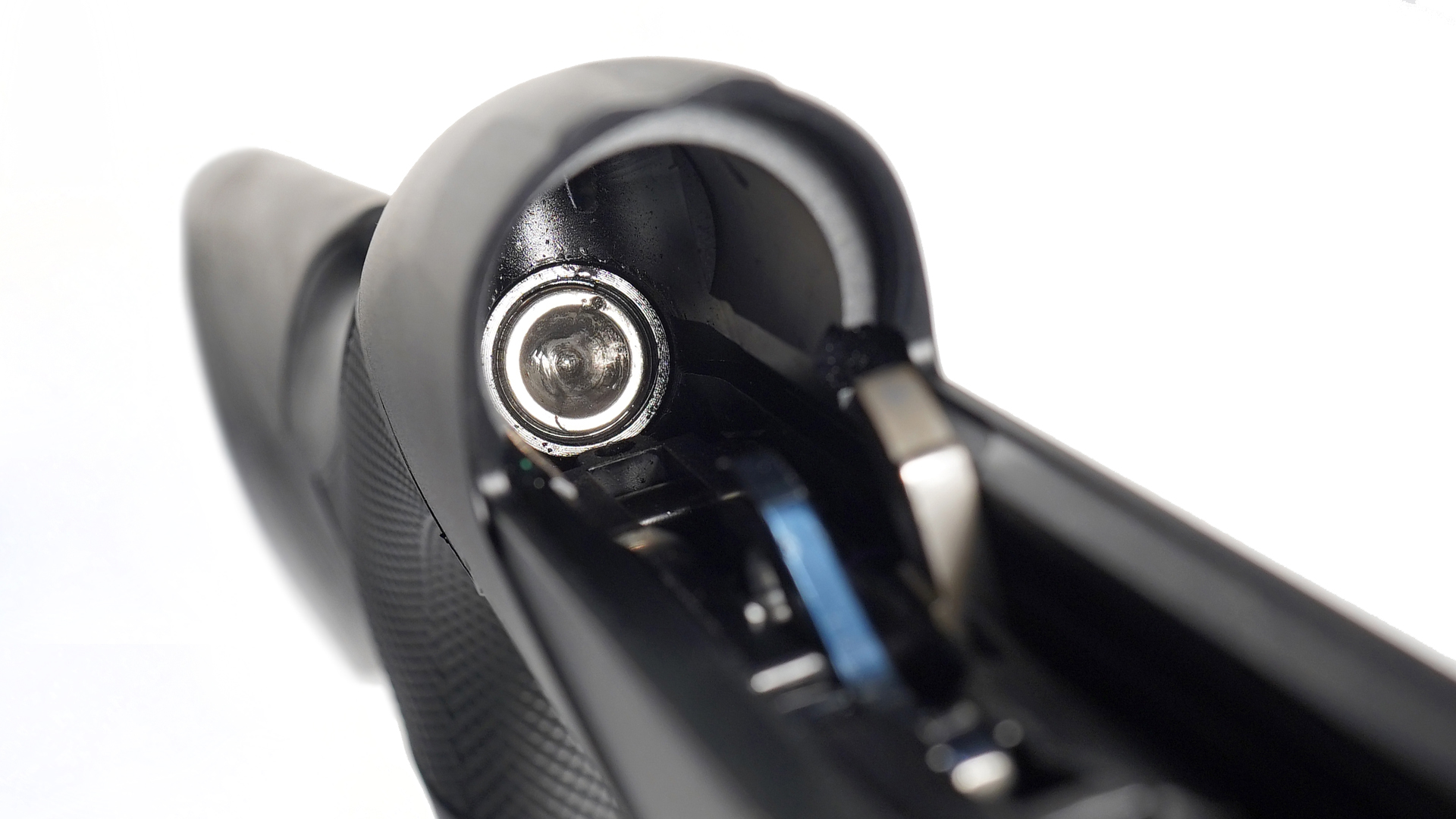
Aside from removing the fore-end, action cover, barrel and bolt assembly from the receiver, the only other item left for maintenance would be to clean the trigger assembly. A single solid pin retains the trigger group and chrome-finished steel shell carrier, or elevator. Once punched free, simply rock the trigger assembly out from its nested position and clean accordingly. All that’s left is to make sure the magazine plug hasn’t fallen out onto the floor. That’s it!
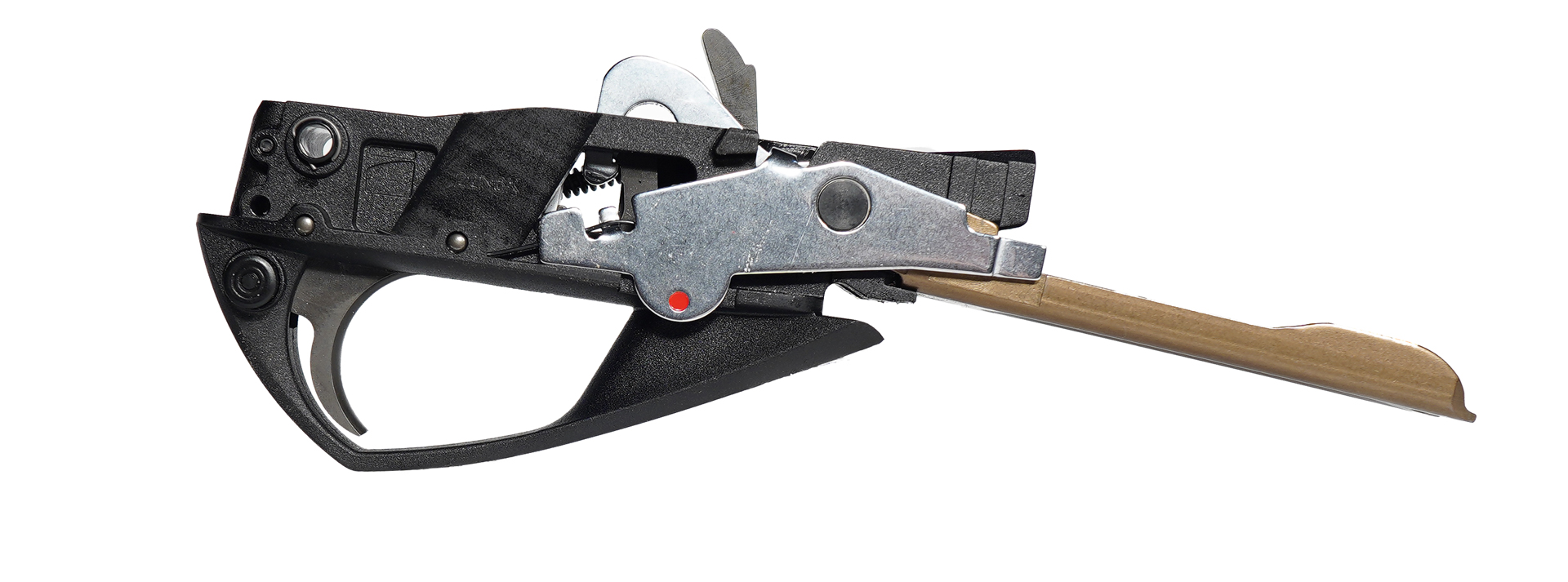
Parting Thoughts
Could you imagine being a gun designer for a firm and having to create something new and exciting every year or so? It leaves you to wonder, "How can the product line improve?" The ETHOS sent a clear message in 2014 upon its unveiling and has done so nearly every year since. Now with the svelte Cordoba treatment and its trim stock, carbon fiber ventilated rib, Power Bore Crio Barrel and BE.S.T throughout, there’s not much this model can’t conquer.

On the range, I found the gun to pattern a touch high, which means I need to drop the stock a few millimeters with an appropriate shim, but several other testers found otherwise, which goes to show there is no such thing as a general shotgun fit. In the field, I found myself more and more impressed with each hunt and only hope for more in the future. I particularly enjoy Benelli’s Shell View feature as a hunter. As a target shooter, too, I don’t see much advantage. However, target shooters will be pleased to know the carbon-fiber rib with its red fiber-optic pipe up front and silver mid-bead is easily replaceable. So if you’re a clay shooter looking for that added edge, Benelli has several profiles to choose from, along with other bits to further customize the gun.
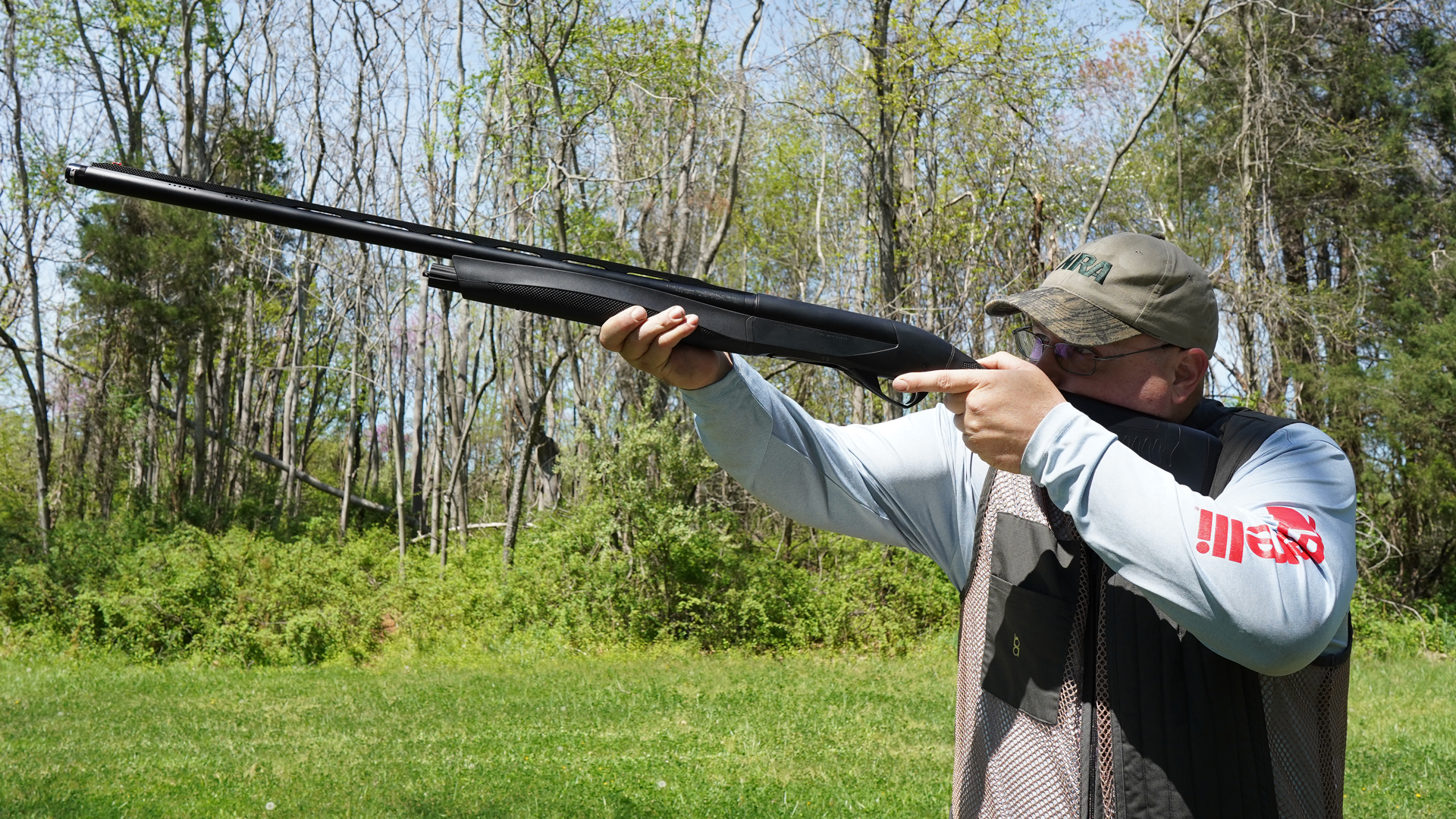
Although Benelli offers its ETHOS Cordoba BE.S.T. in 12, 20 and 28 gauge, the Italian maker provides each with a 28” barrel, but according to my tape measure, the length comes to 27.63”. With an extended choke installed, the final barrel measurement extends to 28.38” with an overall length measured at 49.75”. While it is not an ideal long-range goose gun, the Cordoba is feathery and capable. The gun’s 3” chamber increases your chances on game without adding the bulk of 3.5” accommodations. As for the trigger, it breaks nicer than many rifle triggers do. I appreciate the enlarged trigger guard of the ETHOS series, as well, the push-button cross-bolt safety mounted behind the trigger.

With five clearly notched and marked choke tubes included with the gun, there aren’t many target scenarios the ETHOS Cordoba BE.S.T. can’t take on.
With a sub-7-lb. weight, the Benelli ETHOS Cordoba BE.S.T. strikes an impeccable balance between the hands with well thought-out features from butt to muzzle. And now we have BE.S.T., however, I do find it unfortunate that I can’t send all my guns to Benelli for this treatment.
Benelli ETHOS Cordoba BE.S.T. Specifications
Manufacturer: Benelli Armi, S.p.A (Italy)
Action Type: inertia-driven, semi-automatic shotgun
Chambering: 12 gauge, 3"
Receiver: anodized aluminum
Barrel: 27.63" crio-treated steel; Benelli Surface Treatment (BE.S.T.)
Magazine: tubular; four-round capacity
Sights: carbon-fiber ventilated rib; silver mid-bead, red fiber-optic front
Stock: black synthetic; Comfort Tech 3
Trigger: single-stage; 5-lb., 7.6-oz. pull
Overall Length: 49.75"
Weight: 6 lbs., 14.6 ozs.
MSRP: $2,549












